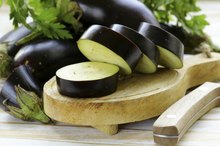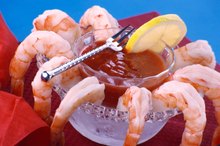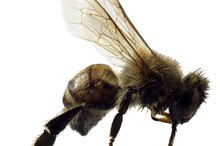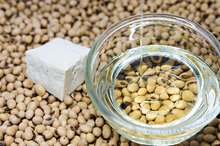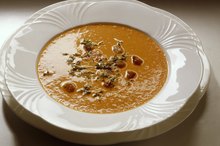Low Histamine Foods
Histamine is a chemical formed from histidine that causes unpleasant allergy symptoms of gastric secretions, dilated blood vessels and hives in sensitive people. Foods low in histamine are desired by people who have an allergy to histamine. The International Chronic Urticaria Society or ICUS, discourages the use of foods with high levels of histamine occurring naturally, fermented food, artificial food coloring and benzoates.
Breads and Cereals
The bread and cereal category contains foods low in histamine. Breads made from pure or unbleached grain or flour, fresh breads, biscuits and pizza dough are low in histamine. Low histamine cereals include plain grains, plain oats, plain oatmeal, plain cream of wheat, plain crackers and puffed rice and wheat. Crackers such as Melba Toast, Wasa crackers and rye crisps are low in histamine in their plainest form. Breads and cereals are appropriate to eat for people looking for low histamine as long as they do not contain ingredients like artificial colors, anise, artificial flavors, cheese, chocolate, preservatives, margarine, jams, jellies, cloves, cinnamon, baking mixes and preservatives such as butylated hydroxyanisole, BHA and butylated hydoxytoluene -- BHT.
- The bread and cereal category contains foods low in histamine.
- Crackers such as Melba Toast, Wasa crackers and rye crisps are low in histamine in their plainest form.
Nuts, Seeds and Legumes
Foods High in Histamine
Learn More
Low histamine legumes include all plain legumes, except soy beans and red beans. All plain nuts, seeds and peanut butter are okay to consume. Nuts, seeds and legumes should be consumed without preservatives, sweeteners and in the freshest form possible.
Fruits and Vegetables
The levels of histamine in fruits and vegetables are low, but increase as ripening occurs according to the Allergy Dietitian website. Fresh, frozen vegetables and juices in the purest forms are low in histamine. Pumpkin, sauerkraut, spinach, eggplant, tomato products are vegetables to exclude. Fruits low in histamine include apples, bananas, cantaloupe, honeydew, grapes, figs, lemon, grapefruit, kiwi, pear, mango, watermelon and lime. Fruits high in histamine to avoid are apricot, cherry, loganberry, date, currant, orange, nectarine, pineapple, peach, strawberries, raspberries, raisins, plums, prunes, jams and jellies.
- The levels of histamine in fruits and vegetables are low, but increase as ripening occurs according to the Allergy Dietitian website.
- Fruits low in histamine include apples, bananas, cantaloupe, honeydew, grapes, figs, lemon, grapefruit, kiwi, pear, mango, watermelon and lime.
Related Articles
References
- International Chronic Urticaria Society: Histamine-Restricted Diet
- Allergy Dietitian: Foods Containing Amines
- Kovacova-Hanuskova E, Buday T, Gavliakova S, Plevkova J. Histamine, histamine intoxication and intolerance. Allergol Immunopathol (Madr). 2015;43(5):498-506. doi:10.1016/j.aller.2015.05.001
- Smolinska S, Jutel M, Crameri R, O'mahony L. Histamine and gut mucosal immune regulation. Allergy. 2014;69(3):273-81. doi:10.1111/all.12330
Writer Bio
Andrea Johnson began writing professionally during her time as a clinical dietitian in which she was published in the "Journal of Renal Nutrition" in 2006. Johnson completed her Master of Science in nutrition from Appalachian State University in 2005.
